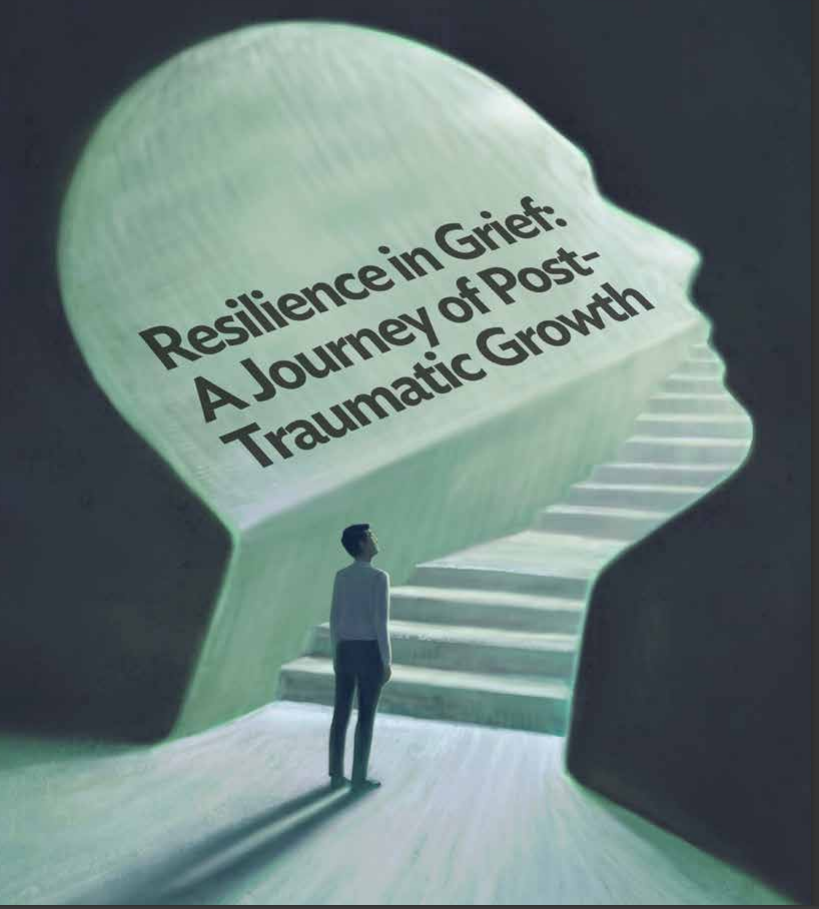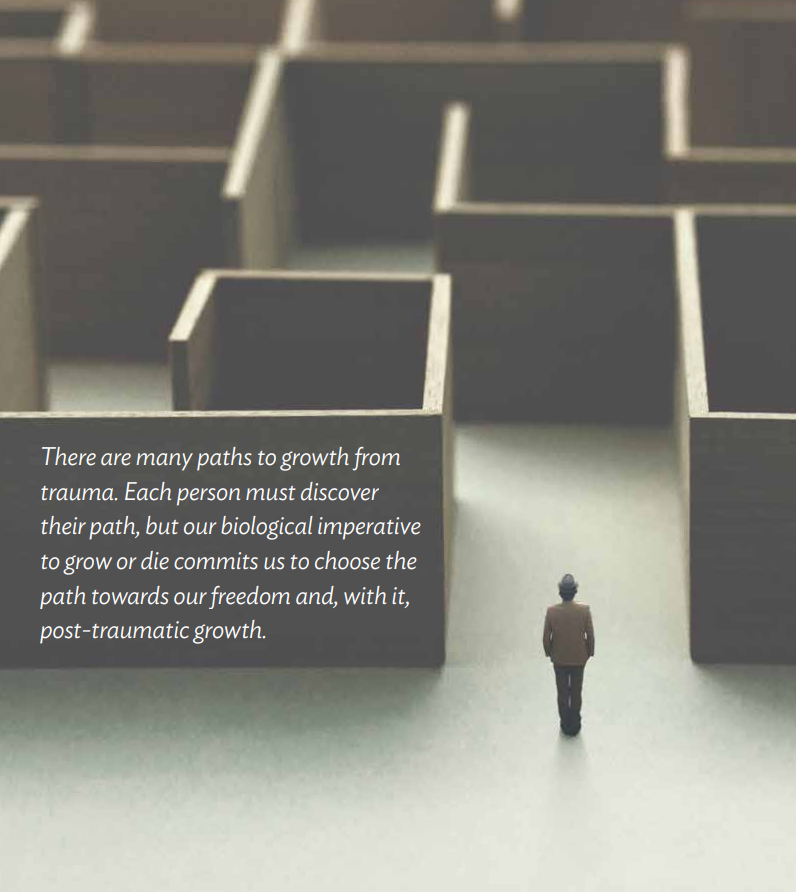
*This is an article from the Spring 2024 issue of Contentment Magazine.
By Richard Citrin, PhD, MBA
When my wife Sheila and I meet new people, the question is inevitably posed to us, “How many children do you have?” We always stop and look at each other, silently asking ourselves, “Do we think this person can handle the truth, or should we just give them the short answer?”
The truth is that we had three children, but two of our adult children died within five years. When we tell people that answer, we generally find that folks move on to talk with others or work to change the conversation topic quickly.
Our son, Ken, was 28 when he was diagnosed with HIV-AIDS and involved in the early trials for the drugs that would eventually make AIDS a chronic disease, though that development came too late for him. His death, after living with AIDS for four years, was torturous as we watched him waste away physically while his spirit fought every moment, hoping to hang on until a cure came across his doorstep. He died in our living room in Texas, surrounded by our family, with Sheila singing softly to him.
Five years later, in that same living room, our daughter, Corinne, who was 40 years old called us from Lincoln, Nebraska, in tears. Despite numerous mammograms that were all negative, Corinne’s concerns about her health led to a blind biopsy that discovered a highly aggressive form of breast cancer. We immediately stopped what we were doing to become a part of Team Corinne, supporting her husband, three small children, and her community of friends in helping her fight this battle. Sheila stopped working and attended Corinne’s care when she began an experimental treatment program at MD Anderson Cancer Center in Houston. After a courageous two-year struggle that included hundreds of people moving to help Corinne and her family, she passed in a hospice room with paper doves on her door and many friends and loved ones lining the hallway.
Corinne was a deeply spiritual woman, and I remember the words she shared with me when I mentioned that everyone was praying for her recovery. She told me “that all prayers are answered, but sometimes the answer is no.”
A few months after Corinne died, my mother called to tell me about a friend of hers who lost a son to suicide. “She is beside herself,” my mother told me. Her friend did not leave her apartment, was in constant tears, and developed suicidal thoughts herself. My mother wanted to help her, but she was inconsolable. She urged me to do whatever we could to avoid that happening. Sheila and I had no intention of letting that happen to us.
Intentionality guided our healing journey. As mental health professionals, we acknowledge the impact of child loss on marriages. Surprisingly, research by Compassionate Friends found that only 16% of marriages end in divorce after the death of a child, challenging common misconceptions.1 Nonetheless, we prioritized our grief, supporting each other and committing to growth.
Navigating the complexities of grief alongside my wife, Sheila, I witnessed her remarkable journey of self-discovery through art, dance, and advocacy. Sheila was a professional dancer and bridged her work as a therapist to bring novel and creative approaches to her work. In this next phase of her life, she developed an unwavering commitment to embracing grief as a catalyst for change in herself and her clients. She has inspired countless individuals to reframe their perspectives on loss and healing.
One of the pivotal moments in Sheila’s healing journey was when we participated in a workshop in Australia with a group of improvisational artists who are part of a global community called Interplay. Interplay uses improv art forms for social good, personal growth, and community advocacy. We were in Sydney to study with local Aussies and perform at the University of Sydney. Corinne was in treatment and stable and encouraged us to go to the session for our self-care.
In one particular workshop session, Sheila and I began to share our story with others. As we moved about the room, telling our tale with song, word, and movement, Sheila moved into the group’s center. She described this moment in her book Warrior Mother.2
I began to sing with my eyes closed, in a somewhat timid but deep and angry voice: “What GOOD, what GOOD, what GOOD can come from THIS?” My voice got stronger when I heard the instrumentalists following my rhythm.
“What GOOD, what GOOD, what GOOD can come from THIS?”
I caught sight of the dancers and realized that one of them was
Richard, who was, of course, as concerned about Corinne as I was.
“What GOOD, what GOOD, what GOOD can come from THIS?”
And then the song began to change, and a softening
came into my voice and whole body.
The song became a prayer, “GOOD CAN come from THIS.
GOOD CAN come from THIS.”
The prayer turned into a pledge and promise, “GOOD WILL COME FROM THIS. GOOD WILL COME FROM THIS.”
In the aftermath, as the song resonated throughout my body, I began to feel, for the first time, that it would.
Corinne’s journey continued for two years after we returned from that trip.
As an outflow of our grief, Sheila decided to learn yet another art form and began attending the Iowa Writer’s Summer Workshops. Immersed in a community of writers and storytellers, she found solace in writing, channeling her grief into words and stories that comforted her. Through the workshops, Sheila discovered the healing power of storytelling, using her own experiences of loss to connect with others deeply and emotionally. She began to see the gifts that grief provides.
Sheila’s commitment to grief advocacy significantly impacted her healing journey. Determined to challenge societal taboos surrounding grief and loss, she became a vocal promoter for those navigating the complexities of grief. Through public speaking engagements, workshops, and community outreach efforts, Sheila shared her story of loss and resilience in her presentations and two books. Warrior Mother2 and her latest book, The Art of Grieving.3
For me, the path to post-traumatic growth took shape through professional reinvention and a deep exploration of resilience. I first encountered resilience in my clinical work when I was asked, along with colleagues, to meet with American Airlines staff after 9/11, when we lived in the Dallas/Fort Worth area. Over several months of meeting with pilots, flight attendants, gate agents, and ramp workers, I saw how their resilience moved them from grief to action as they saw their role in honoring their colleagues, helping their company, and healing our country.
My journey of healing included seeking support through a research-based treatment program for complicated grief. Complicated grief is grief that lasts over a year, and in my case, I often found myself weeping when I talked about our loss, even three years later. Over 16 weeks, I engaged in therapeutic interventions aimed at navigating the complexities of loss and finding resilience in the face of adversity. Through individual therapy sessions, group support, and experiential exercises, I learned to confront my grief head-on and find meaning amid pain. 
I also immersed myself in the study of resilience and positive psychology. Drawing upon research and insights from leading experts in the field, I discovered new strategies for coping with adversity and fostering personal growth in the face of trauma. From mindfulness practices to gratitude exercises, I developed a model of resilience that goes beyond “bouncing back” to seeing how, in the face of hardships, I could use my power of anticipation and preparation to plan for the adversity. Rather than just bouncing back I could use adversity to learn and grow—to bounce forward. My work led to the publication of my book, The Resilience Advantage (with Alan Weiss).4
Sheila and I have forged a path through the trauma of our grief by relying on our resilience, thirst for learning, and stubborn persistence. Perhaps our nature or upbringing propelled us to create the intention to heal and not to linger in the pain that creates suffering. We still experience the pain every day, but we don’t have to live there. It is okay just to visit. As we continue to embrace the journey of post-traumatic growth, we are reminded that within every moment of pain lies a possibility that we honor Corinne and Ken’s memory in everything we do.
In the face of life’s most formidable challenges, resilience emerges as a secret growth mechanism and a profound capacity to thrive and evolve. There are many paths to growth from trauma. Each person must discover their path, but our biological imperative to grow or die commits us to choose the path towards our freedom and, with it, post-traumatic growth.
References
- NFO Research on Behalf of The Compassionate Friends, Inc. A Survey of Bereaved Parents. 1999
- Collins, SK. Warrior Mother. She Writes Press, Berkeley, CA, 2013
- Collins, SK. The Art of Grieving. In Press, Earth Springs Press, Pittsburgh, PA 2024
- Citrin, RS and Weiss, A. The Resilience Advantage. Business Expert Press, New York, 2016




